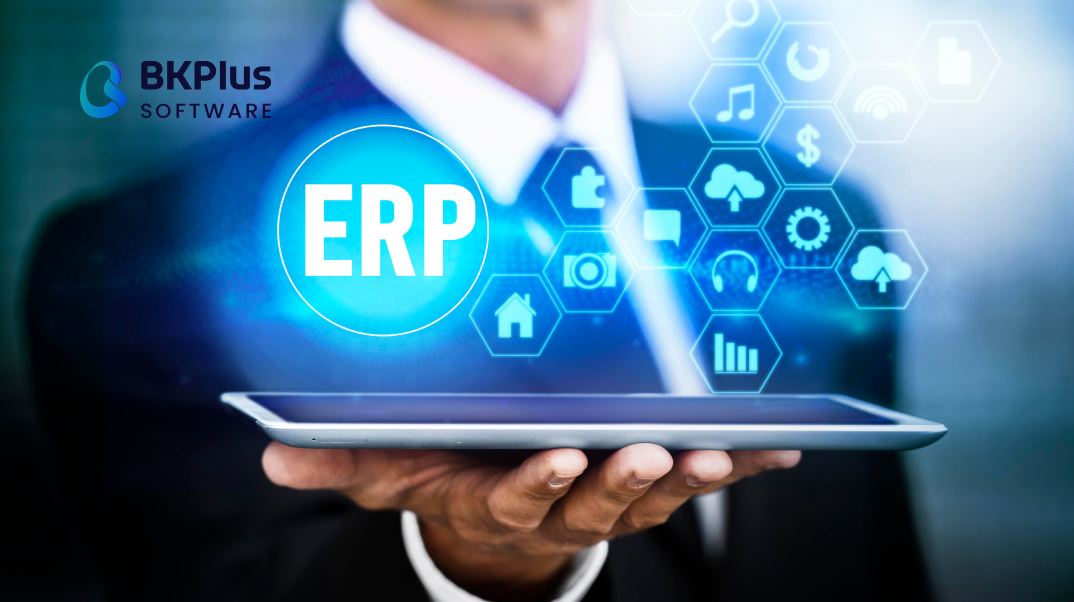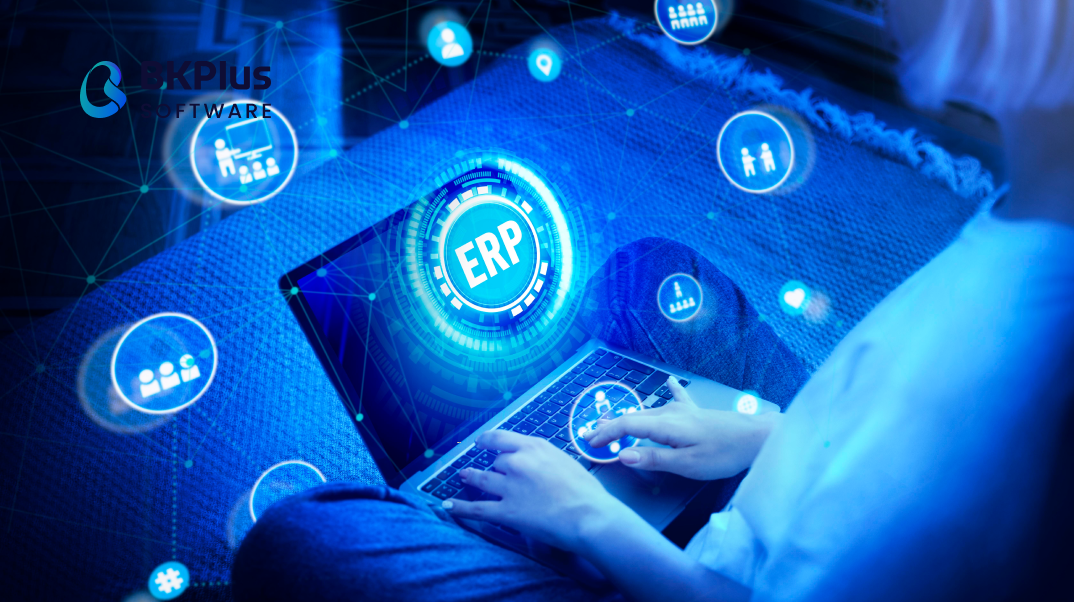Efficient cost management is essential for your business’s growth and profitability. Your ERP or business management system is critical to staying ahead in today’s ever-changing business world.
In this article, we will show you how the factors that impact ERP software costs can not only keep your business running more smoothly but can also save you money and help your company succeed financially.
What is ERP Software?
An ERP (Enterprise Resource Planning) software system is a comprehensive, integrated software solution for managing all of a company’s key back-office processes. It typically includes modules for accounting, human resources, customer relationship management (CRM), inventory and supply chain management, and other core business processes.
ERP systems are designed to automate and streamline these processes, often using a single database to store data for all the different modules. This can help businesses reduce their operating costs by simplifying and standardizing their back-office operations. Additionally, ERP systems provide real-time insight into all aspects of the business, which can help managers make more informed decisions about the deployment of resources.
Key Characteristics of ERP Software
Four main features distinguish ERP solutions from other business management solutions:
1. A Unified System for Production and Business Management: ERP integrates all members of an organization (from managers to employees), all processes, and functional departments into a structured production and business operation.
2. A Supportive Software System: ERP is a software system that does not replace human work in automated production lines, but supports it.

3. A Rule-Based and Planned System: ERP works according to clear rules and plans. The roles and responsibilities of employees are defined in advance, as are uniform and strict rules. Production and business plans are drawn up weekly, monthly, and annually.
4. An Interconnected System: ERP connects the departments of a company, and enables them to work together, share information, and cooperate instead of working as isolated silos.
7 Factors Affecting ERP Implementation Costs
A typical ERP suite includes modules such as financial management and accounting, procurement management, sales management, production management, inventory management, and others. As a result, ERP implementation projects can be quite time and resource-consuming.
The specific cost of an ERP solution for your organization cannot be definitively stated, as pricing varies widely among vendors. Nevertheless, the total cost of implementation is generally influenced by the following factors:
1. Number of Users
The number of users determines the cost of the ERP software. The more users, the higher the cost of implementing the ERP system for the enterprise. Therefore, before developing ERP software for enterprise resource planning, managers should determine the number of accounts needed in the system and categorize the roles and positions of users to accurately estimate user costs.
2. Consultancy Fees
Consulting fees are the costs companies pay for the ERP implementation partner to perform business analysis and create detailed technical requirements documents (URD). Consultants work directly with the company to gather information about current operational processes, analyze data, and create the technical documentation required for the implementation process. This work is time-consuming and requires a high level of expertise, which is reflected in a corresponding fee.
3. License Fees
For a company to use an ERP system, it must purchase a license from the software provider. This license can be either perpetual or temporary. The fee that a company pays to acquire this license is known as the license fee. This fee is included in the total cost of the ERP implementation.
4. Software Development
After a detailed assessment and discussion, the service provider develops and customizes the software’s features to meet the company’s specific requirements. This process includes configuration, system setup, migration from legacy systems, and integration with other software applications. The cost of software development is influenced by factors such as workload, project duration, and system complexity.

While foreign ERP providers often set their prices based on hourly rates, Vietnamese providers often offer fixed-price projects with predetermined schedules. This offers customers greater cost certainty. Hourly rates for ERP implementations can vary greatly depending on factors such as experience and location. Foreign experts usually charge higher hourly rates.
5. Training Fees
To enable a seamless transition to the new ERP system, providers usually offer comprehensive training programs. These training sessions, which are conducted either in person or remotely, enable employees at all levels to use the various functions of the system effectively.
Training is essential to ensure that the ERP system integrates smoothly with existing workflows and realizes its full potential benefits. The costs associated with training, including the development of user manuals and training materials, are generally included in the overall ERP package.
6. Maintenance and Support
Post-implementation, ongoing maintenance, and support services are critical to the long-term success of an ERP system. Most vendors offer annual maintenance contracts that cover technical support, bug fixes, and system updates. Although these fees are not mandatory, they are highly recommended.
By investing in a maintenance contract, organizations can ensure that their ERP system is always up-to-date, secure, and aligned with their evolving business needs. In addition, vendor support is invaluable as companies expand, merge, or make other organizational changes that may require modifications to the ERP system.
7. Upgrade
Regular upgrades are essential for ERP systems to stay current and support evolving business needs. Upgrade activities can include software updates to introduce new features and functionality, as well as implementation-specific customizations to adapt the system to specific business needs. Organizations must carefully consider the need for upgrades and the associated costs.
Moreover, it is crucial to assess the potential impact of upgrades on existing business processes and determine whether additional hardware or software investments are required to ensure smooth system operation.
Conclusion
ERP is a powerful tool, but its successful implementation requires addressing potential challenges. While ERP is a popular choice for businesses, it’s essential to recognize and overcome its limitations to achieve optimal performance. We hope this article has provided valuable insights into ERP systems for you and your business.
With our deep expertise in ERP consulting, BKPlus Software is committed to delivering tailored solutions that maximize your business efficiency. Get in touch today!



